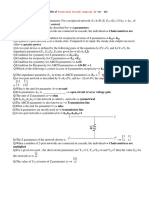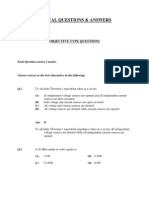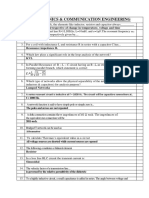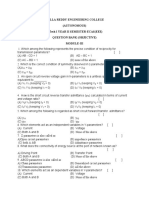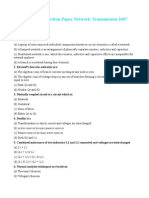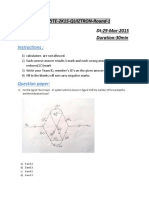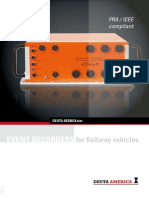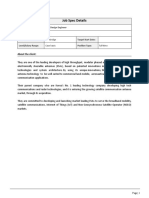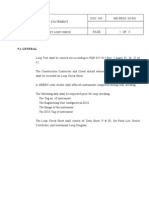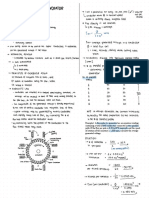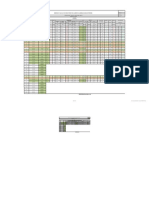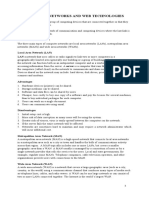0% found this document useful (0 votes)
41 views12 pagesNetwork Analysis and Synthesis Sample Problems
The document contains a series of multiple-choice questions related to network analysis and synthesis, focusing on topics such as impedance functions, filter types, and network stability. It includes questions about the characteristics of active and passive filters, the significance of poles and zeros in network functions, and the conditions for stability in networks. The questions are designed to assess understanding of electrical engineering concepts in the context of network theory.
Uploaded by
Tesfamariam TadesseCopyright
© © All Rights Reserved
We take content rights seriously. If you suspect this is your content, claim it here.
Available Formats
Download as PDF, TXT or read online on Scribd
0% found this document useful (0 votes)
41 views12 pagesNetwork Analysis and Synthesis Sample Problems
The document contains a series of multiple-choice questions related to network analysis and synthesis, focusing on topics such as impedance functions, filter types, and network stability. It includes questions about the characteristics of active and passive filters, the significance of poles and zeros in network functions, and the conditions for stability in networks. The questions are designed to assess understanding of electrical engineering concepts in the context of network theory.
Uploaded by
Tesfamariam TadesseCopyright
© © All Rights Reserved
We take content rights seriously. If you suspect this is your content, claim it here.
Available Formats
Download as PDF, TXT or read online on Scribd
/ 12






